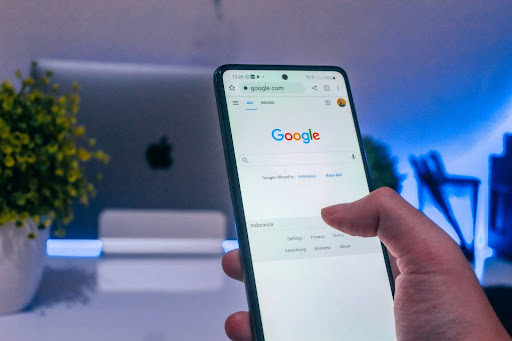Mobile-First Indexing: What It Means and How to Optimize for It
In today's digital world, mobile devices are no longer just a secondary option for browsing; they have become the primary way users access the internet. As a result, search engines, particularly Google, have adapted to this shift by prioritizing mobile-first indexing.
Mobile-first indexing means that Google predominantly uses the mobile version of a website for ranking and indexing purposes, rather than the desktop version. This shift, which began in 2018, reflects the growing trend of mobile web traffic and aims to ensure that users receive the most relevant and mobile-friendly results when they search.
As mobile browsing continues to outpace desktop usage, this change is crucial for businesses that rely on search engine visibility to attract customers. Websites that aren’t optimized for mobile devices may suffer in search rankings, potentially losing out on valuable traffic.
In this context, it’s essential for webmasters, marketers, and business owners to understand the implications of mobile-first indexing and how to optimize their sites for mobile users. This article will explore what mobile-first indexing means, why it’s important, and offer practical tips for ensuring that your website is fully optimized for this mobile-driven future.
Understanding Mobile-First Indexing
Mobile-first indexing refers to Google’s shift in how it crawls, indexes, and ranks websites, prioritizing the mobile version of a site over the desktop version. This change came as mobile internet usage surpassed desktop, making mobile websites the primary source of content for indexing.
Traditionally, Google’s algorithms used the desktop version of a site as the main reference for ranking, but with mobile-first indexing, Googlebot now primarily uses the mobile version to evaluate content, usability, and other ranking factors.
Mobile-first indexing does not mean that desktop websites are ignored, but rather that the mobile version is given priority in terms of search engine rankings. If a website has a mobile-friendly version, Google will use it to determine rankings and crawl content. If the mobile version is not optimized, it could lead to lower rankings, even if the desktop version is high-performing.
This shift reflects the growing reliance on mobile devices for browsing and searching the web. Websites that offer a seamless mobile experience—such as fast loading speeds, easy navigation, and properly formatted content—are more likely to rank well.
Understanding this transition is crucial for businesses and webmasters to stay competitive, as Google’s algorithms now favor mobile-optimized sites for better user experience and accessibility.
Impact on SEO
The shift to mobile-first indexing significantly impacts SEO strategies, as it changes how Google prioritizes content for ranking. Traditionally, Google’s algorithms indexed and ranked content based on the desktop version of a website.
However, with mobile-first indexing, Google primarily uses the mobile version of a site to determine its ranking in search results. This means that if a website's mobile version is poorly optimized or lacks critical content compared to the desktop version, its search visibility and ranking could suffer.
Mobile-first indexing emphasizes the importance of delivering a high-quality, mobile-friendly user experience. Sites with fast loading times, responsive design, and easy navigation are more likely to rank higher. Additionally, since Googlebot will crawl and index the mobile version, SEO factors like mobile page speed, mobile usability, and mobile-specific content become more critical.
For SEO professionals, this means that ensuring consistency in content and design between desktop and mobile versions is essential. Discrepancies between these versions can harm rankings, especially if key information, images, or structured data are missing from the mobile site.
Consequently, businesses must prioritize mobile optimization to maintain or improve their search engine performance in a mobile-first world.
Mobile-First Indexing Criteria
Mobile-first indexing means that Google primarily uses the mobile version of a website’s content for indexing and ranking. In this model, the mobile version is considered the "main" version of the site, and it must meet specific criteria to ensure optimal indexing.
Mobile-Friendly Design: A website must be fully optimized for mobile devices, with a responsive design that adapts to various screen sizes. Google prefers sites that provide a seamless user experience across both mobile and desktop devices. Having a mobile version that is significantly different from the desktop version can lead to lower rankings.
Content Parity: The mobile version must have the same content as the desktop version, including videos text, images and other important elements. If content is missing or hidden on mobile, Google may not index it, which can harm the site’s rankings. This is especially crucial for visually driven industries, such as event photography, which relies on high-quality images and videos to showcase the work effectively across all devices.
Page Speed: Mobile page speed is critical. Slow-loading pages on mobile devices can lead to a poor user experience and negatively affect rankings. Optimizing images, reducing heavy scripts, and improving server response time are essential for mobile performance.
Crawlability and Accessibility: Ensure that Googlebot can access and crawl all mobile pages. Avoid blocking important content via JavaScript, CSS, or other methods, as this could prevent Google from indexing essential parts of the mobile site.
Meeting these criteria ensures that a website performs well in the mobile-first indexing environment.
How to Optimize for Mobile-First Indexing
To optimize for mobile-first indexing, focus on ensuring that your website provides an excellent mobile experience, as Google now primarily uses the mobile version of a site for indexing and ranking.
Responsive Web Design: Ensure your website is responsive, meaning it adjusts automatically to different screen sizes. This ensures both mobile and desktop users see the same content on the same URL, which is key for mobile-first indexing.
Mobile-Friendly Design: Optimize navigation, readability, and touch-friendly elements. Make sure buttons are easy to click, text is readable without zooming, and the site’s layout adapts smoothly to various devices.
Page Speed Optimization: Mobile users expect fast-loading pages. Compress images, minimize JavaScript, and use efficient caching to improve load times. Utilize tools like Google PageSpeed Insights to test and identify areas for improvement.
Content Consistency: Ensure the content displayed on your mobile site matches that on the desktop version. Google’s algorithm expects the same high-quality content on both, so avoid hiding or reducing content on the mobile version.
User Experience: Focus on delivering a seamless mobile experience with easy navigation, quick load times, and minimal pop-ups. Test your site regularly using Google’s Mobile-Friendly Test to ensure it meets Google’s standards for mobile usability.
By following these steps, your site will be better optimized for mobile-first indexing and improve your search rankings.
Common Issues and Solutions
Slow Loading Times on Mobile
Mobile users expect fast load times, and Google considers page speed as a ranking factor. Slow-loading mobile pages can negatively impact user experience and search rankings.
Solution: Optimize images by compressing them using tools like TinyImage, use modern image formats like WebP, and implement lazy loading. Minimize JavaScript and CSS files, use asynchronous loading, and choose a content delivery network (CDN) for faster content delivery.
Content Discrepancies Between Mobile and Desktop Versions
Sometimes, mobile versions may have less content than the desktop version, which can harm SEO since Google uses the mobile version to index content.
Solution: Ensure that both versions contain the same content, including text, media, and structured data. Avoid content hiding techniques like using JavaScript to hide text, as it may not be indexed properly on mobile.
Crawlability Issues
Mobile websites may have content or features that are blocked from being crawled by search engines, such as certain JavaScript or CSS files. This can prevent Googlebot from properly indexing the mobile version.
Solution: Check your robots.txt file to ensure important resources (like JavaScript, CSS) are accessible to Googlebot. Also, test your mobile site with Google Search Console's mobile-friendly tool to identify crawlability issues. Additionally, using a website indexing tool like IndexPilot can help you monitor how search engines are indexing your site and identify any issues with crawlability.
By addressing these common issues, businesses can improve their site’s performance and ranking in mobile-first indexing, ensuring they meet both user and search engine expectations.
Tools for Monitoring Mobile-First Indexing
Monitoring the impact of mobile-first indexing on your website is crucial for ensuring that your SEO efforts are aligned with search engine expectations. Here are key tools to track and optimize for mobile-first indexing:
Google Search Console
Google Search Console (GSC) offers various reports to monitor mobile indexing. The Mobile Usability Report highlights mobile-specific issues, such as viewport problems, clickable elements too close together, or text too small for easy reading. Additionally, the Mobile Indexing Report shows whether Google is indexing your site’s mobile version and how it impacts your rankings.
Google’s Mobile-Friendly Test
This tool allows you to check if a webpage is mobile-friendly. It provides insights on issues like load time, content display, and responsive design, helping to identify areas for improvement.
Google PageSpeed Insights
PageSpeed Insights provides a detailed analysis of your mobile page speed. It offers recommendations for optimizing mobile performance, including image compression, script reduction, and server optimizations, all critical for mobile-first indexing.
Screaming Frog SEO Spider
This tool helps analyze the mobile-friendliness of your site. It crawls your website and checks for mobile-related issues like responsive design, content inconsistencies, and accessibility, providing a comprehensive overview of mobile optimization.
These tools give actionable insights, allowing webmasters to enhance mobile performance and ensure compliance with mobile-first indexing standards.
Future of Mobile-First Indexing
The future of mobile-first indexing is closely tied to the increasing dominance of mobile devices in internet usage. As mobile browsing continues to outpace desktop usage, Google and other search engines will likely place even more emphasis on mobile user experience when ranking websites.
Mobile-first indexing is not just about optimizing for mobile devices today, but preparing for the future of digital browsing, where mobile is the primary means of access.
In the coming years, we can expect further advancements in how search engines evaluate mobile-friendly websites. For instance, Google may begin to prioritize features like voice search, mobile-specific content, and app-like experiences (such as Progressive Web Apps) as mobile-first indexing continues to evolve.
As technology improves, search engines will likely get better at interpreting dynamic content and more complex interactive elements that are optimized for mobile.
Moreover, mobile-first indexing will increasingly intersect with other technologies, such as 5G networks, which promise faster loading speeds, and AI-driven search algorithms that consider factors like contextual relevance and intent.
Websites that are agile in adapting to these advancements will not only be prepared for mobile-first indexing but also for the next wave of digital search trends. Businesses must continuously monitor mobile usability and optimize for evolving mobile standards to maintain strong rankings.
Conclusion
In conclusion, mobile-first indexing is a critical shift in how search engines, particularly Google, evaluate and rank websites. With mobile internet usage surpassing desktop, Google now prioritizes the mobile version of a site for indexing and ranking purposes.
This means that if your website isn’t optimized for mobile devices, you could be missing out on higher search rankings and visibility. To stay competitive, it’s essential to implement a mobile-first strategy, focusing on responsive design, mobile-friendly user experience, fast loading times, and optimized content.
By ensuring that your mobile site mirrors your desktop site’s content and functionality, you improve your chances of maintaining strong SEO performance. Regularly monitoring mobile usability with tools like Google Search Console and testing your website’s speed and responsiveness will help identify and address potential issues.
The future of SEO will only continue to emphasize mobile-first approaches, so staying ahead of these trends is crucial. Websites that fail to optimize for mobile may see a drop in rankings, while those that prioritize mobile-first indexing will benefit from improved user engagement and better visibility in search results. Investing in mobile optimization today will pay off in both the short and long term.








